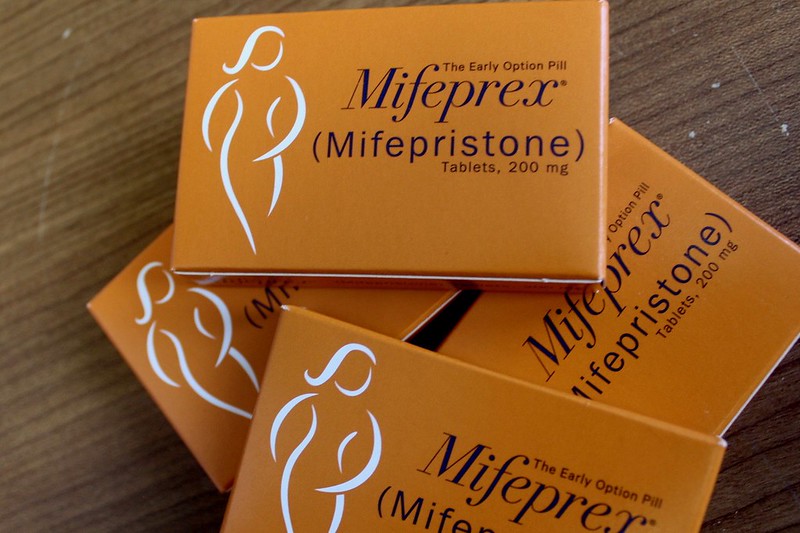On Tuesday, researchers at the University of California, San Francisco released the first-ever study on the safety and effectiveness of new online clinics offering telemedicine abortion, allowed for the first time in the U.S. during the pandemic. Telemedicine abortion combines medication abortion—using pills to end a pregnancy in the 10 weeks gestation—with telehealth, which allows health providers to supervise the use of abortion pills using videoconferencing, telephone consultations or a secure messaging platform.
“This study is real world evidence that providing medication abortion with telehealth and with a mail order pharmacy leads to efficacy and safety that is similar to in-clinic care,” said Ushma D. Upadhyay, PhD, MPH, study author and associate professor at Advancing New Standards in Reproductive Health (ANSIRH).
Last year, telemedicine abortion startups opened across the country after a federal court in July 2020 temporarily suspended a U.S. Food and Drug Administration (FDA) in-person distribution requirement for the abortion pill mifepristone because of the pandemic.
Choix, Just the Pill and Hey Jane were some the earliest online clinics offering telemedicine abortion. These virtual clinics screened patients remotely using a no-test, no-touch medical protocol that uses patient history rather than in-clinic exams to determine eligibility for medication abortion. The clinic then mailed the abortion pills to eligible patients at home using online pharmacies.
The new research tracked the efficacy and safety of fully remote, asynchronous medication abortion care provided by the virtual clinic Choix to 141 patients between October 2020 and January 2021.
“They use an asynchronous model, so there’s no video communication. It’s a secure messaging platform through which they communicate with patients,” said Upadhyay. “They screen for their medical eligibility based on patient reported medical history. They don’t use an ultrasound, or physical exam. There’s no in-clinic visit, which makes it so unique. And then the medications are mailed to patients via a mail order pharmacy.”
Among the 110 patients reporting outcomes, 95 percent had a complete abortion without intervention, 5 percent required medical care to complete the abortion, and no patients reported any major adverse events. The study concluded that this “efficacy rate is similar to in-person provision, suggesting that abortion provided via telehealth is feasible and safe.”
“This study shows that abortion can be as simple and private and autonomous as having a telehealth consultation with a clinician and having medications mailed directly to you at your home or your friend’s home,” said Upadhyay.
These findings were consistent with research released last February from the U.K. providing the first real-world evidence in a national population that no-test telemedicine abortion is just as safe and effective as in-person abortion health care.

Since 2016, Gynuity Health Projects has conducted research on telemedicine abortion in the U.S. offered by brick-and-mortar clinics. Called the TelAbortion Study and conducted as an FDA-approved exception to the REMS restriction, this research requires patients to have ultrasounds. Gynuity published results in 2019 showing high rates of safety and effectiveness for telemedicine abortion with ultrasounds. Since COVID, clinics in the study waived ultrasound screenings in over half of abortions and Gynuity published a study in March of this year showing these services were just as safe and effective.
Telemedicine Removes Abortion Barriers
Upadhyay hopes that telemedicine abortion will make abortion health care more accessible to the many women who experience barriers.
“There are so many barriers to abortion,” said Upadhyay. “We know from our research that there are 27 abortion deserts in the U.S. There are so many places where there are lots of people who need abortion care, but still have tremendous barriers—travel barriers, finding childcare, taking time off work, and telling people that they didn’t want to tell—a boss, colleagues, a babysitter or family member.”
Upadhyay emphasized the accessibility and convenience that telemedicine abortion provides.
“With telehealth abortion, people can have their consultation in the evenings. They can do it at work with secure messaging. And then they can have their medications mailed the next day,” said Upadhyay. “It just makes it a lot easier to access this care and integrate it into people’s busy lives.”
How does mifepristone work? (from ANSIRH):
In early May, the Biden Administration announced the FDA would review its longstanding restrictions on the abortion pill mifepristone. Under a drug safety program called the Risk and Evaluation Mitigation System (REMS), the FDA prohibits retail pharmacies from stocking and distributing mifepristone and allows the medication to be dispensed only in certain health care facilities through a certified prescriber.
The FDA REMS requires providers to sign up with the drug distributor, order and stock the medication, give detailed information about the medication to patients, have them sign a consent form, label the medication, and then distribute it directly to patients. These onerous requirements limit the number of providers willing to offer medication abortion and significantly increase the cost for patients.
How do the REMS affect access to the abortion pill? (from ANSIRH):
After the federal court temporarily suspended the FDA in-person distribution requirement for mifepristone last July, the Trump administration appealed the decision. In January, the U.S. Supreme Court reinstated the FDA restriction, closing down many online abortion services. In April, the Biden administration reversed course, lifting the in-person distribution requirement for the duration of the public health emergency. In May, the Administration ordered the FDA to review the necessity of its restrictions on mifepristone.
Upadhyay hopes her research will encourage the FDA to permanently lift the restrictions on mifepristone, but she also hopes it will encourage more providers to offer telemedicine abortion.
“Not only should the study inform the FDA in lifting the regulations, but also inform provider practices to offer medication abortion in more situations and to more patients,” said Upadhyay.
“This research means providers can assess whether a patient is eligible just by a simple conversation with her about her medical history. They don’t need an ultrasound. So that opens the door for so many additional clinicians that can offer this service … campus student health centers … rural nurses and doctors … family practice physicians. They can write a prescription for their patients and they don’t need a $2,000 piece of medical equipment to assess a pregnancy.”
Upadhyay is now conducting further research into online abortion services provided by Choix, Hey Jane and Abortion on Demand in 21 states.
“This study is one step towards making medication abortion more normalized and integrated into primary healthcare,” said Upadhyay. “Telehealth medication abortion is the future, and it’s time our policies align with the scientific evidence.”
Up next:





